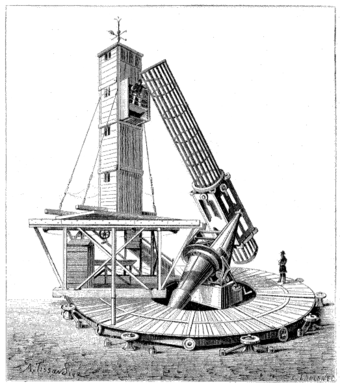What is a Newtonian reflector?

The first successful practical reflecting telescope was built by Newton. Until then telescopes were large unwieldy instruments. The design of the telescope was recast by Newton on the basis of his theory of optics. He used mirrors instead of lenses and the result was a new telescope 10 times smaller than the traditional ones.
Earlier also many efforts were made to make more powerful telescopes using larger lenses. They were unsuccessful as the lens kept producing coloured rainbows around bright objects like the Moon and the planets. The coloured fringes formed due to the unequal refraction of colours by the lens were unavoidable in simple telescopes.
Newton was under the assumption that no lens could rectify this issue. Though this was a mistaken assumption, it led him to use a mirror to form an image and thereby to build a reflecting telescope. This is now called the Newtonian reflector. A curved mirror brings rays of light to a focus and forms an image by reflection (whereas a lens does it by bending or refraction). Some of the largest telescopes used today are based on the telescope made by Newton in 1668.
Picture Credit : Google
Comments
No comments